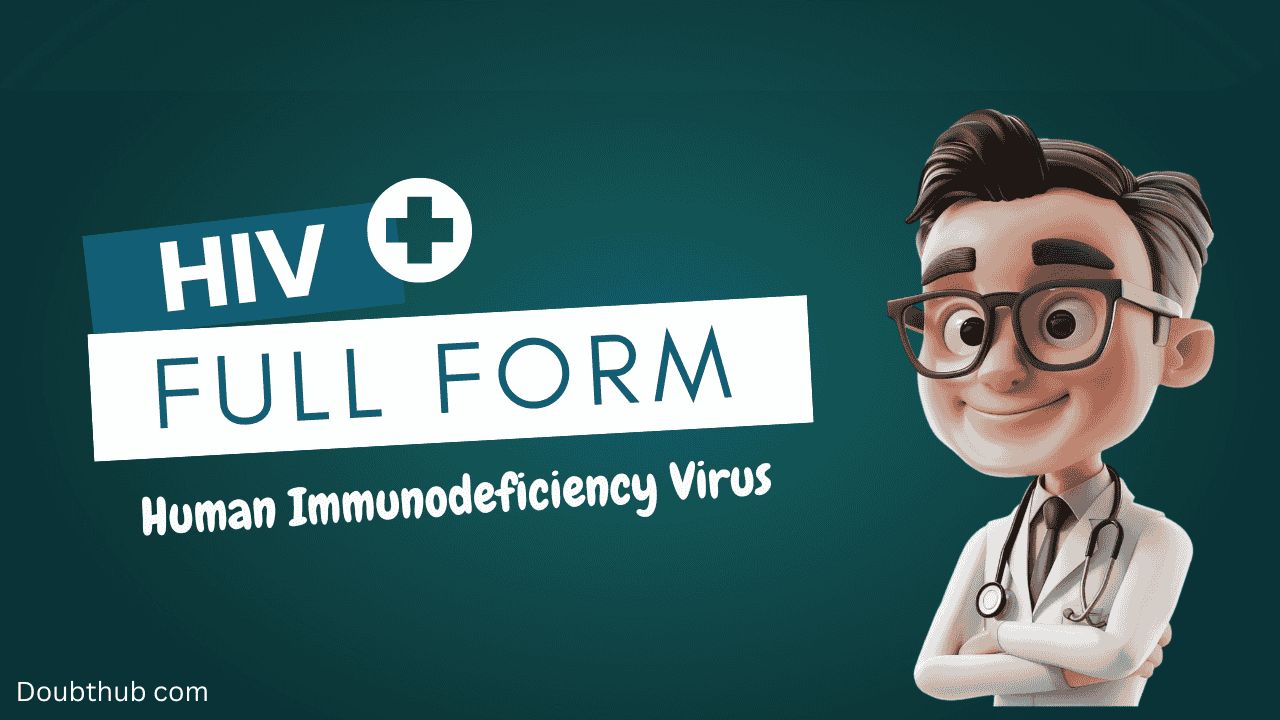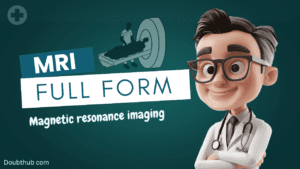HIV/AIDS is a crucial health topic today. Most people consider HIV and AIDS to be the same, but both are different. If you want to know about the full form of HIV, symptoms, causes, and treatment, then this blog will be beneficial for you. Let’s know about HIV in detail without any delay!
Table of Contents
What is HIV full form?
The full form of HIV is: Human Immunodeficiency Virus
- H – Human (It spreads only in humans)
- I – Immunodeficiency (It weakens the immune system)
- V – Virus (It is a virus that multiplies inside the body)
HIV (Human Immunodeficiency Virus) is a virus that damages the immune system and makes the body weak to fight infections and diseases. If HIV is not treated, it can turn into AIDS (Acquired Immunodeficiency Syndrome).
What is HIV? Human Immunodeficiency Virus
HIV is a virus that damages the CD4 cells (T-cells) of the human body’s immune system. These cells work to fight infection. If HIV is not treated on time, the immune system becomes so weak that even a small disease can be fatal.
- Having HIV does not mean having AIDS!
- HIV is a virus, while AIDS is its last stage, when the immune system is destroyed.
MRI Full Form: Meaning, Procedure, Benefits & How It Works
How is HIV spread?
HIV is not spread by any normal contact like shaking hands, hugging, eating on the same plate, or staying in the same room.
HIV can be spread in only these 4 ways:
- Unsafe Sexual Contact
- HIV can be transferred through unprotected sex (without a condom).
- If the partner is HIV positive, then there is a chance of getting infected.
- Blood Transfer
- The virus can be transferred through HIV infected blood transfusion.
- It can also be spread by sharing syringes or needles (like drug injections).
- Mother to Child Transmission
- If the mother has HIV, then the baby can also get it during pregnancy or breastfeeding.
- From Infected Needle
- If an infected needle is used in a hospital or tattoo parlor, there is a risk of getting HIV.
Symptoms of HIV (Human Immunodeficiency Virus)
The symptoms of HIV can be different for every person. Sometimes no symptoms are seen for many years, but the virus is present in the body.
- EarlySymptoms (within 1-2 months)
- Fever
- Fatigue
- Sore throat
- Rashes or Skin Infection
- Headache and joint pain
- Later Symptoms (6 Months – 10 Years)
- Weight Loss
- Frequent Infections
- Swelling of Lymph Nodes
- Night Sweats
If you are seeing these symptoms, then you should immediately get an HIV test done.
How is HIV tested? &Types of HIV tests:
If you are at risk of HIV due to unprotected sex, needle sharing or other high-risk activities, getting tested on time helps take precautions, get timely treatment and prevent infections for better health.
Types of HIV Test:
- ELISA Test (Antibody Test) – Detects HIV antibodies from a blood sample.
- RNA Test (Viral Load Test) – It is the most accurate test to detect the virus.
- Western Blot Test – It is a confirmatory test which verifies the results of ELISA test.
HIV test can be done in any government or private hospital.
HIV Treatment & Prevention
What is the treatment for HIV? Till now there is no permanent cure for HIV, but with ART (Antiretroviral Therapy) HIV positive people can live a healthy life.
- ART (Antiretroviral Therapy) – It controls the virus and prevents AIDS.
- Healthy Diet and Lifestyle – It is important to build good immunity.
Ways to prevent HIV – The most important thing to prevent HIV is prevention!
- Practice safe sex – use a condom and be with only one partner.
- Avoid infected blood – check for HIV-free blood at the time of blood donation.
- Do not share needles – never share syringes and razors.
- If you are an HIV positive mother, save your child – you should take ART treatment during pregnancy.
Some informational Question
How long can an HIV-positive person live?
With proper treatment (ART), they can live a near-normal lifespan.
What happens if you have HIV?
It weakens the immune system, increasing infection risk. Without treatment, it can lead to AIDS.
How is HIV caused?
It spreads through unprotected sex, infected needles, blood transfusions, or from mother to child.
Is it safe to live with HIV patients?
Yes, HIV does not spread through casual contact, sharing food, or touching. Safe living is possible with precautions.
In this article, we explored the full form of HIV and its significance in various contexts. Understanding such abbreviations not only enhances our knowledge but also helps in better communication. If you found this information helpful, feel free to explore more full forms on DoubtHub.com and expand your understanding. Stay informed, and keep learning with us!

